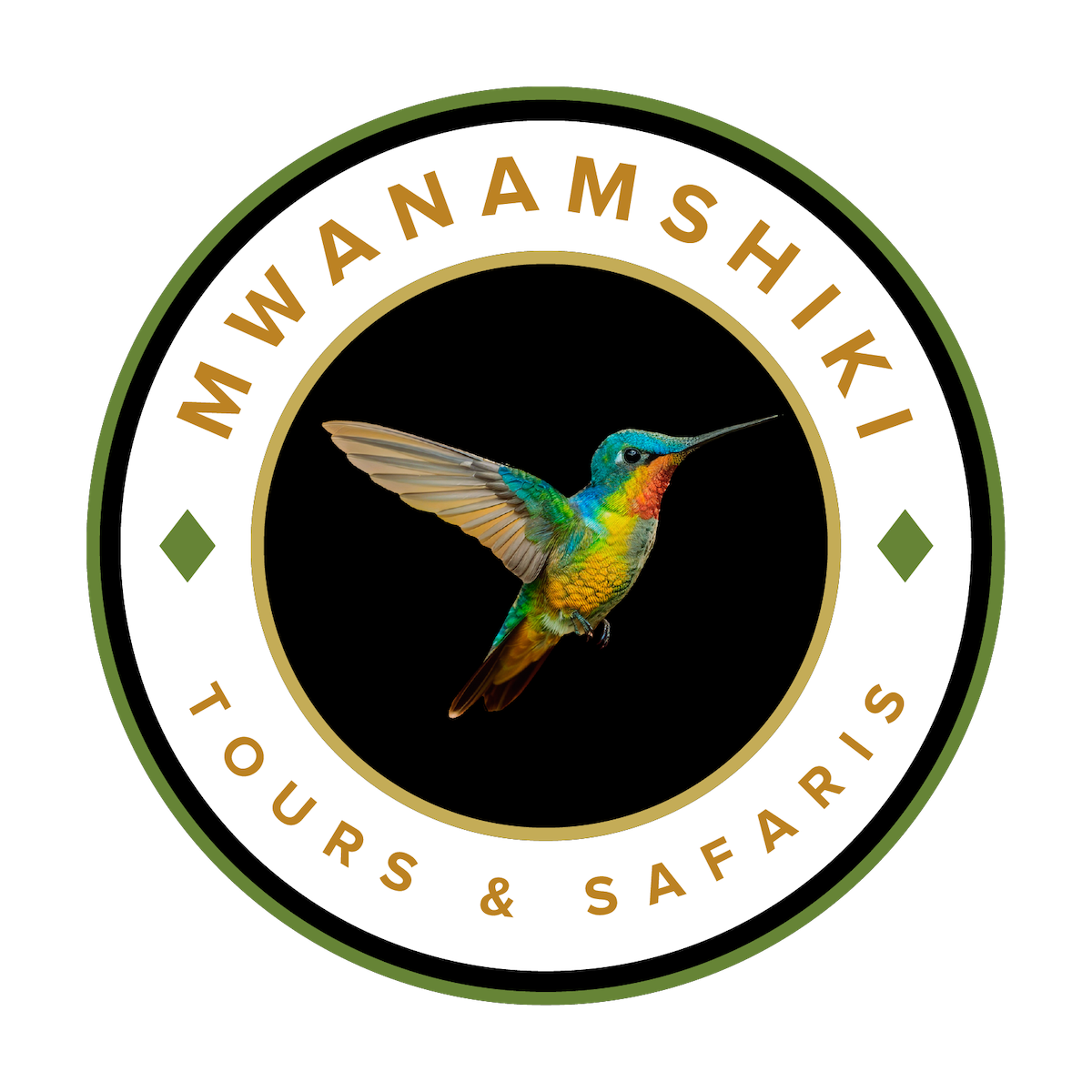Destinations
Ngorongoro Crater
Africa’s Lost Eden
Nestled in northern Tanzania, the Ngorongoro Crater stands as one of the planet’s most extraordinary natural marvels. Often called the “Garden of Eden,” this vast caldera is the largest intact volcanic crater on Earth, born over 2 million years ago when a colossal volcano erupted and then collapsed. Spanning an impressive 260 square kilometers, the crater shelters a spectacular variety of wildlife, making it a top safari hotspot in Tanzania. Encircled by towering steep walls, Ngorongoro offers visitors a rare opportunity to observe a rich abundance of animals concentrated within a compact, accessible area delivering an unforgettable, immersive wilderness adventure.
Attractions found in Ngorongoro Crater
Crater Floor
The Ngorongoro Crater is the largest intact volcanic caldera in the world, spanning about 19 km (12 miles) in diameter and 260 km² in area.
The Crater floor is an enclosed ecosystem teeming with wildlife, including the Big Five—lions, elephants, buffaloes, rhinos, and (occasionally) leopards. It offers a rich mix of grasslands, swamps, forests, and a soda lake, supporting over 25,000 large animals year-round. Wildlife viewing here is exceptional due to the flat terrain and high concentration of animals in a relatively small area.
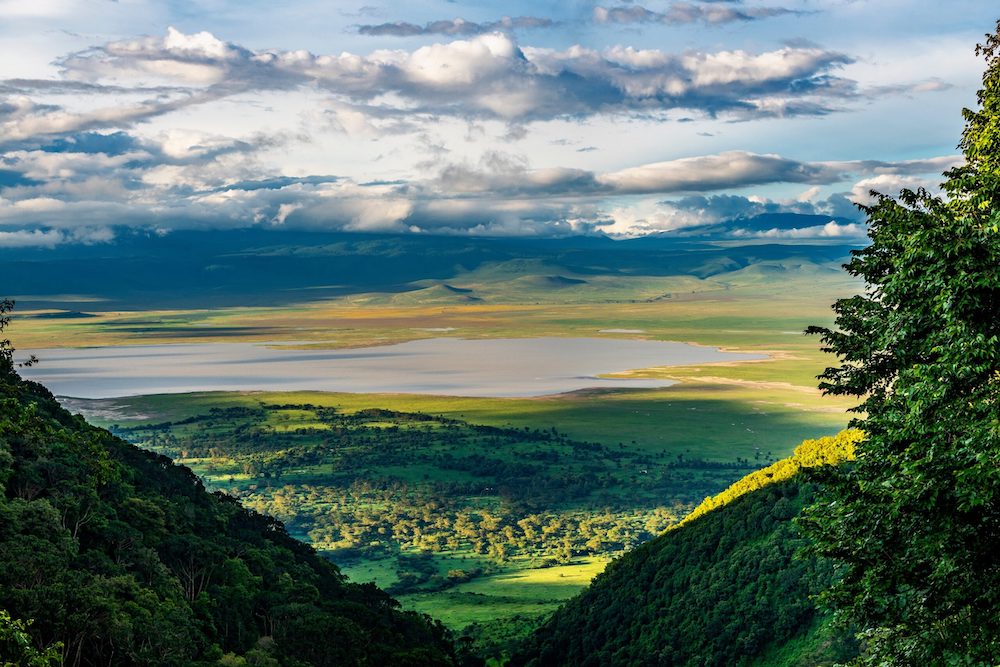
Wildlife Viewing
The Crater is one of the best places in Africa to spot a wide range of animals in a single day. Notable species include: Black rhinos rare and heavily protected, Large prides of lions often seen hunting, Massive elephant bulls, Hyenas, jackals, and cheetahs, Plains game wildebeest, zebras, gazelles, and elands. The animals are non-migratory, so sightings are consistent throughout the year.
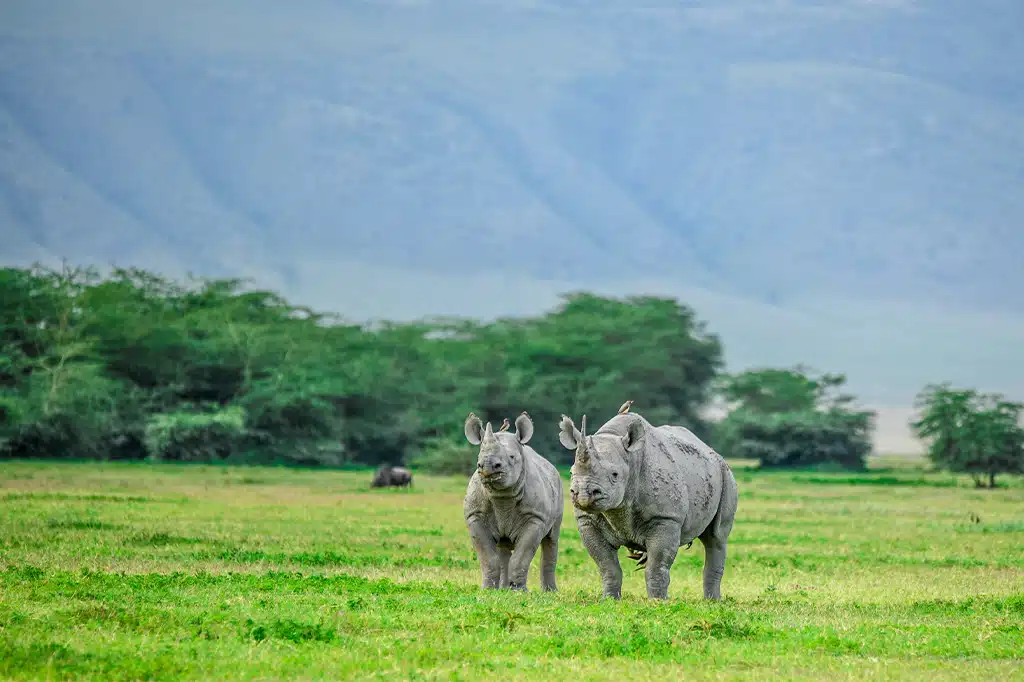
Ngorongoro Conservation Area (NCA)
A UNESCO World Heritage Site, the NCA covers over 8,200 square kilometers and includes not just the Crater but also volcanoes, forests, gorges, archaeological sites, and highland plains.
It’s unique because it promotes coexistence between humans and wildlife particularly the Maasai people, who live and herd cattle within the area. Visitors can experience both cultural encounters and natural wonders, making it one of the most diverse protected areas in the world.
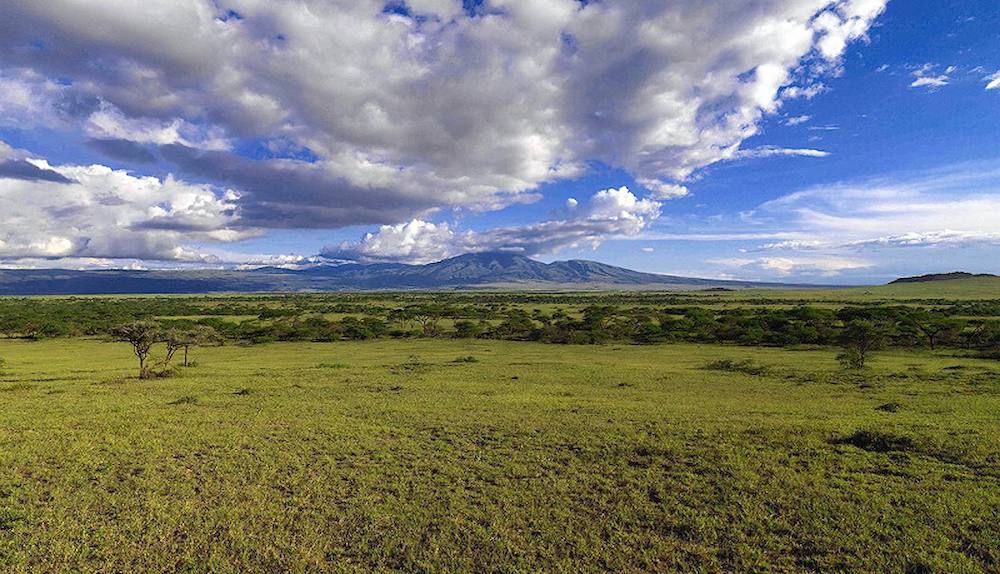
Lake Magadi
Located on the Crater floor, Lake Magadi is a shallow alkaline (soda) lake that plays a crucial ecological role. It attracts thousands of flamingos, especially during the dry season, along with other waterbirds like avocets, stilts, and plovers. Wildlife often comes to drink from the lake, providing dramatic photography opportunities.
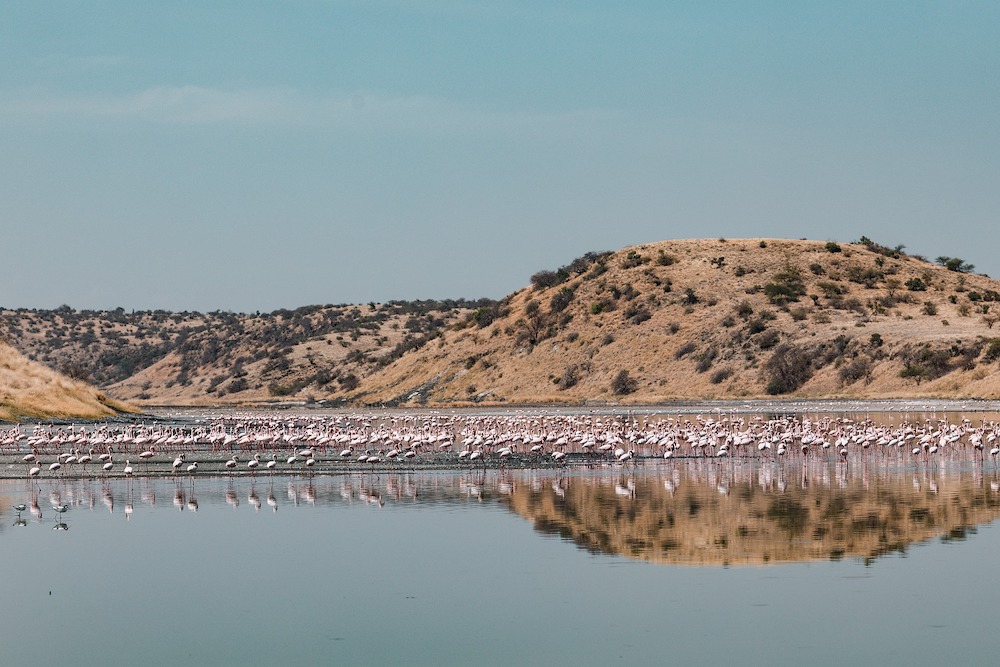
Olduvai Gorge (Oldupai Gorge)
Known as the “Cradle of Mankind”, Olduvai Gorge is one of the most important paleoanthropological sites in the world.
Excavations have revealed early human fossils, tools, and evidence of human evolution dating back over 2 million years. A visit includes a stop at the Olduvai Museum, which showcases fossil discoveries by Louis and Mary Leakey, offering insights into our ancient ancestors. Though not inside the Crater itself, it’s part of the wider NCA and is a must-see attraction for anyone interested in human history.
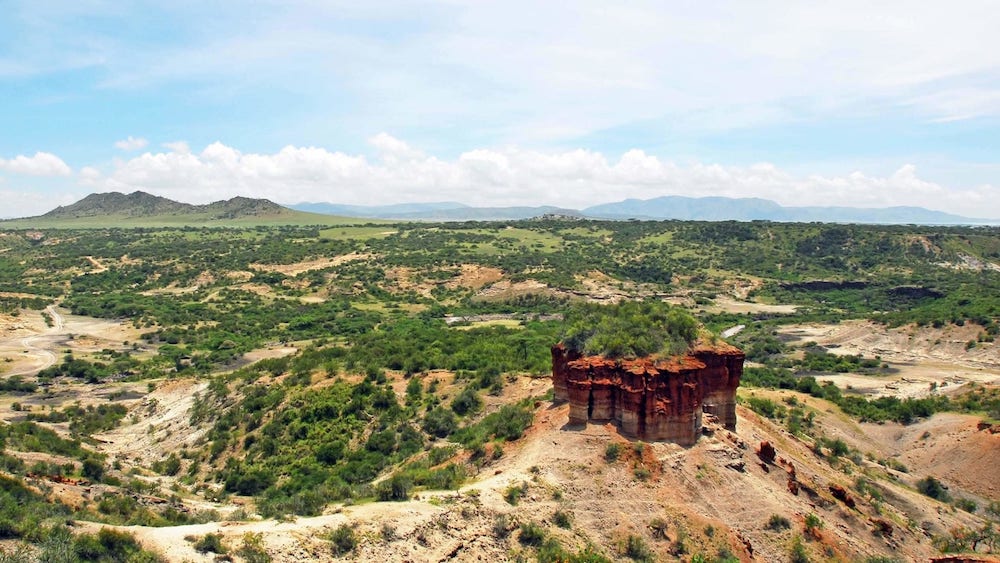
Lerai Forest
Lerai Forest is a lush, green fever tree forest located in the south-central part of the Crater floor. It provides important shelter and food for elephants, monkeys, and a wide variety of birds. Leopards are occasionally spotted here, making it a hotspot for predator sightings. The contrasting green forest against the dry Crater plains adds to the dramatic scenery.
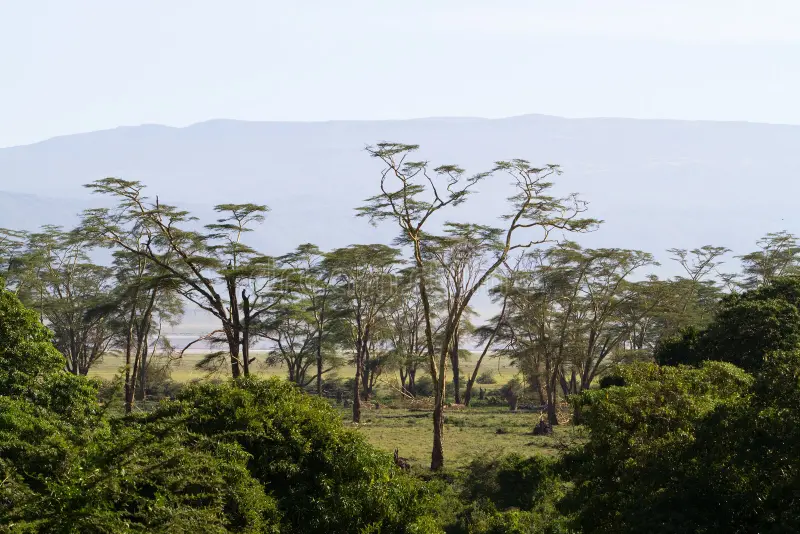
Empakaai Crater
Located northeast of the Ngorongoro Crater, Empakaai is a smaller volcanic caldera (about 6 km wide), but just as stunning. The Crater contains a deep soda lake, which covers almost half the floor and is often visited by flamingos and other waterfowl. Empakaai is less visited and more remote, offering a peaceful alternative for hikers and nature lovers.
A hike down to the lake provides a chance to enjoy untouched forest, wildlife like buffalo and bushbuck, and panoramic views that stretch to Mount Kilimanjaro on clear days.
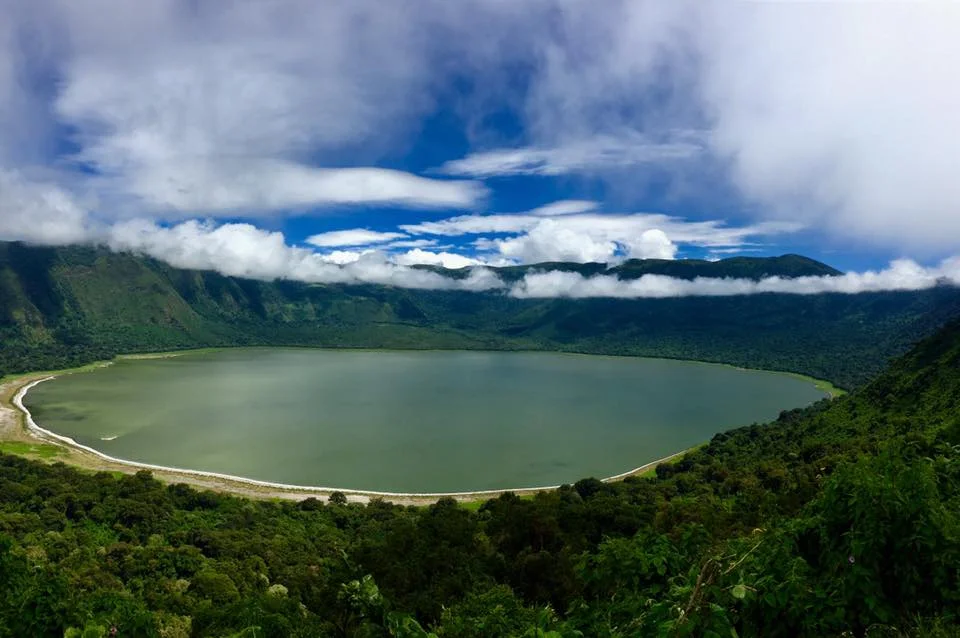
Laetoli
Located about 45 km south of Olduvai Gorge, is a key early human fossil site in Africa. It is famous for 3.6-million-year-old footprints preserved in volcanic ash, made by Australopithecus afarensis, an early human ancestor.
Discovered by Lous and Mary Leakey in 1978, these footprints provide the earliest evidence of upright walking. While the original prints are protected, visitors can learn about their importance at the nearby Olduvai Museum. Laetoli is a vital part of the Ngorongoro Conservation Area and highlights the region’s role as the birthplace of humanity.
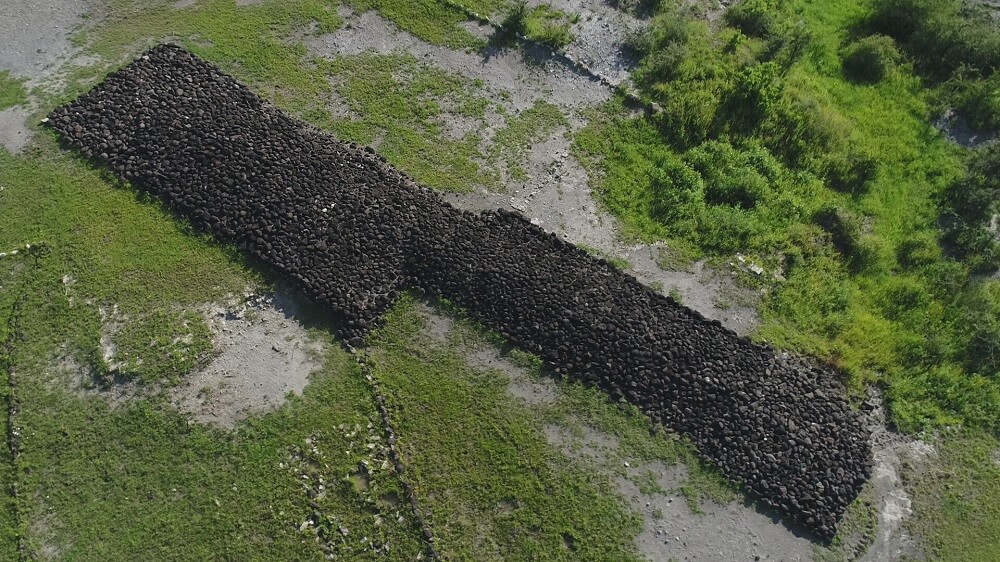
Thing to do/Activities in Ngorongoro Crater
Walking Safaris:
Experience the African wilderness up close with a guided walking safari along the Crater rim or surrounding highlands. Accompanied by armed rangers and expert local guides, you’ll explore untouched landscapes, track wildlife on foot, and discover the smaller wonders of nature bird calls, animal tracks, and medicinal plants. It’s a thrilling, intimate way to connect with the environment, far from the rumble of safari vehicles.
Game Drive Viewing:
Game drives inside the Ngorongoro Crater offer some of the most spectacular wildlife viewing on Earth. Spot the famous Big Five lion, leopard, elephant, rhino, and buffalo as well as cheetahs, hyenas, hippos, wildebeests, zebras, and more. The Crater’s unique topography means wildlife is concentrated in a relatively small area, making sightings frequent and unforgettable. Whether it’s sunrise or sunset, every drive is an adventure.
Bird Watching:
With over 500 bird species recorded, Ngorongoro is a haven for birdwatchers. Marvel at the vibrant colors of flamingos dancing on the shores of Lake Magadi, watch for crowned cranes gliding over the grasslands, or spot rare raptors soaring above the Crater rim. From waterbirds to forest dwellers, the birdlife here is as rich and diverse as the landscape itself.
Maasai Cultural Visits:
Step into the world of the Maasai people, the traditional inhabitants of the Ngorongoro highlands. Visit an authentic Maasai boma (village), where you’ll learn about their ancient customs, unique attire, cattle culture, and deep spiritual connection to the land. It’s an inspiring cultural exchange that adds a meaningful human dimension to your safari experience.
Visit Olduvai Gorge:
Explore the legendary Olduvai Gorge, known as the Cradle of Mankind, where some of the earliest human fossils were discovered by Louis and Mary Leakey. The on-site museum offers fascinating exhibits on human evolution and paleoanthropology. Standing at this ancient site, you’ll literally be walking in the footsteps of our earliest ancestors.
Hike Empakaai Crater:
For a more secluded experience, hike down into the beautiful Empakaai Crater. Surrounded by misty forested walls and home to a shimmering soda lake often visited by flamingos, this lesser-known caldera offers serenity, scenery, and solitude. The trek is moderately challenging, but the views stretching all the way to Mount Kilimanjaro on clear days make it deeply rewarding.
Explore Laetoli:
Visit Laetoli, one of the most important paleoanthropological sites in Africa. It was here that Mary Leakey discovered 3.6-million-year-old hominid footprints, preserved in volcanic ash the earliest evidence of upright walking. While the original site is protected, the nearby Olduvai Museum shares the incredible story behind this discovery, offering a powerful glimpse into our shared human origins.
How to Get There
Ngorongoro Crater is about a 4-hour drive from Arusha, making it easily accessible by road as part of the Northern Safari Circuit. Most visitors travel by road, but you can also fly into Manyara Airstrip, which has regular flights from Arusha. Charter flights are available for direct access. Kilimanjaro International Airport (JRO) is the main international gateway.
Best Time to Visit Ngorongoro Crater
Ngorongoro is a year-round destination, but seasons offer different experiences:
Dry Season (June to October):
Best for wildlife viewing as animals gather near water. Clear skies and pleasant weather make it ideal for safaris.
Green Season (November to May):
Lush landscapes, great for birdwatching and photography. Fewer tourists mean a quieter, more peaceful experience.
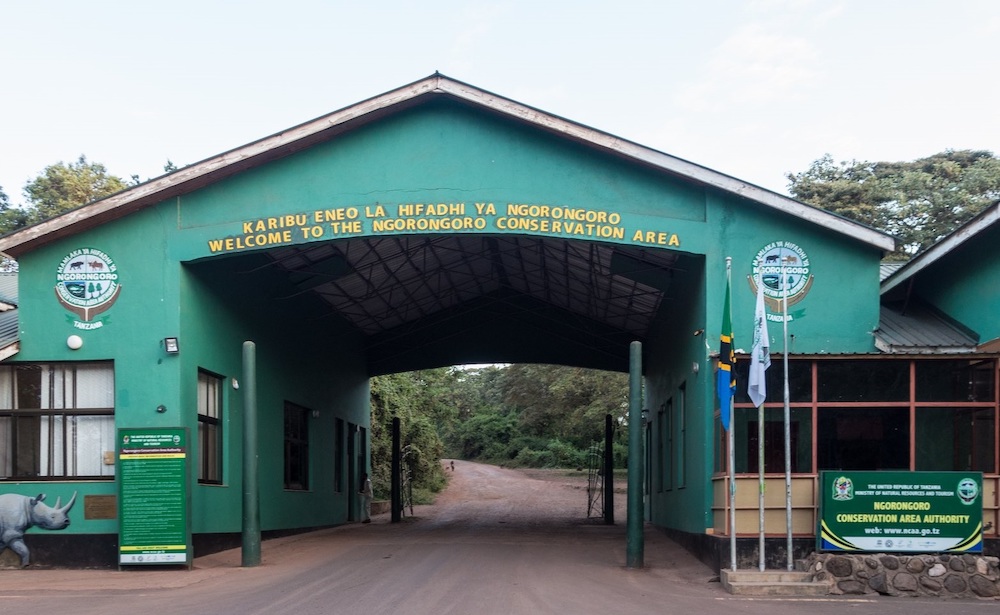
Ngorongoro Crater Weather and Climate
Ngorongoro enjoys a mild climate due to its high elevation:
Dry Season:
20°C–25°C (68°F–77°F), cool mornings and nights.
Rainy Season:
15°C–25°C (59°F–77°F), with short rains starting in November and heavier rains in April and May. The scenery is lush and green.
